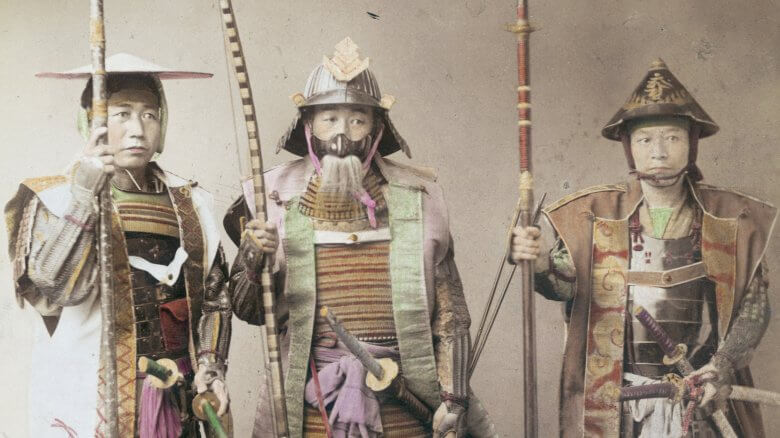Few weapons in history inspire as much awe and reverence as the Japanese katana. A blade forged with precision, wielded with mastery, and wrapped in centuries of cultural significance, the katana is more than just steel—it’s a symbol of craftsmanship, honor, and lethal elegance.
But how did this weapon, once the companion of samurai warriors, evolve from its feudal roots to become an iconic artifact embraced by martial artists, collectors, and enthusiasts worldwide? Today, we’ll trace the fascinating evolution of the katana—and its enduring appeal across the ages.
The Birth of a Legend in Feudal Japan
To understand the katana, we first need to go back to where it all began—feudal Japan, a time of lords, warriors, and constant warfare. The katana emerged during the late 13th century, following the Mongol invasions of Japan. Samurai warriors needed a blade that was not only sharper but also faster to draw and strike in the chaos of battle.
Enter the katana.
Unlike the tachi sword, which had a more pronounced curve and was worn blade-down, the katana’s blade was slightly straighter and worn blade-up, allowing for a quicker draw and response. This simple design tweak—paired with its unparalleled sharpness and durability—made the katana the weapon of choice for samurai.
But the process of crafting a katana was far from simple. It required a painstaking forging process, blending hard, sharp steel (for the edge) with softer, more flexible steel (for the core). This unique technique gave the katana its dual qualities of strength and flexibility.
And the best part? Each katana was handcrafted, often engraved with signatures from its maker. Owning one wasn’t just about having a weapon—it was a deeply personal connection to a craftsman’s mastery.
More Than a Weapon
The Japanese katana wasn’t purely a practical tool—it carried deep spiritual and cultural significance. Samurai believed that the katana embodied their soul, serving as both a weapon of war and a symbol of their code of honor, bushido. Its presence was felt not only on the battlefield but also in rituals, ceremonies, and everyday life.
Quick trivia to impress your friends:
- A samurai’s katana was so sacred that it was often passed down through generations, building family legacies.
- During peacetime, samurai continued to carry their blades as a badge of status—even as urbanization spread in the Edo period.
But as samurai culture faded into history, many feared the katana would disappear with it. Spoiler alert—it didn’t.
From Obsolescence to Art Form
By the late 19th century, Japan was modernizing rapidly, adopting Western firearms and military tactics. Swords were banned for common citizens during the Meiji Restoration, and katanas largely faded as functional weapons of war.
However, rather than vanishing entirely, the katana found new life as an art form. Master swordsmiths continued to craft blades, honoring time-honored forging methods while passing their knowledge to later generations. These katanas were no longer wielded in combat but celebrated for their craftsmanship and artistic beauty.
This transformation kept the katana alive—and set the stage for its comeback in the modern world.
The Modern Katana
Fast-forward to modern times, and the katana has transcended its original role as a weapon. No longer confined to feudal warriors, it has become an object of fascination for people worldwide.
Why Does the Katana Still Captivate Us?
- Pop Culture Credibility
You’ve likely seen a katana on screen, from movies like Kill Bill and The Last Samurai to anime like Rurouni Kenshin. These depictions have immortalized the katana as the ultimate blend of elegance and lethality.
- Martial Arts Mastery
Many martial artists today train with the katana in disciplines like kendo and iaido, studying not only the physical techniques but also the mental focus and discipline associated with wielding it.
- Collector’s Pride
High-quality hand-forged katanas are sought after by collectors and enthusiasts. What’s more impressive than displaying a masterfully crafted katana in your living room? (Warning: Guests may never stop asking about it.)
- Cultural Connection
For some, owning or training with a katana is about preserving a small piece of Japanese history and honoring its deep-rooted traditions.
Modern Uses of the Katana
- Competitions & Demonstrations – Martial arts practitioners showcase cutting techniques (tameshigiri) and kata routines in global tournaments.
- Ritual & Spiritual Practice – The katana continues to play a role in cultural ceremonies and traditional samurai reenactments.
- Artistic Pieces – Today’s swordsmiths craft katanas as decorative pieces, blending modern innovation with classic techniques.
Why the Katana Stands the Test of Time
Unlike many weapons from history, the katana’s allure hasn’t faded with technological advancements. This is because it represents so much more than brute force. It’s a testament to precision, tradition, and the pursuit of perfection. From its balanced blade to its spiritual significance, the katana is as much a reflection of human ingenuity as it is a tool for combat.
Whether you’re a history buff, martial artist, or simply someone enchanted by its mystique, the katana offers something for everyone. Its journey from feudal Japan to modern hands isn’t just a story of adaptation—it’s a story of survival, and it reminds us that even in a world dominated by cutting-edge technology, the timeless appeal of craftsmanship still holds immense value.
Want to Hold History in Your Hands?
If you’re captivated by the story of the Japanese katana or dreaming of owning one, start exploring pieces handcrafted by modern artisans. Each one carries a piece of history and a connection to this legendary weapon’s enduring legacy.
Cassia Rowley is the mastermind behind advertising at The Bad Pod. She blends creativity with strategy to make sure ads on our site do more than just show up—they spark interest and make connections. Cassia turns simple ad placements into engaging experiences that mesh seamlessly with our content, truly capturing the attention of our audience.


